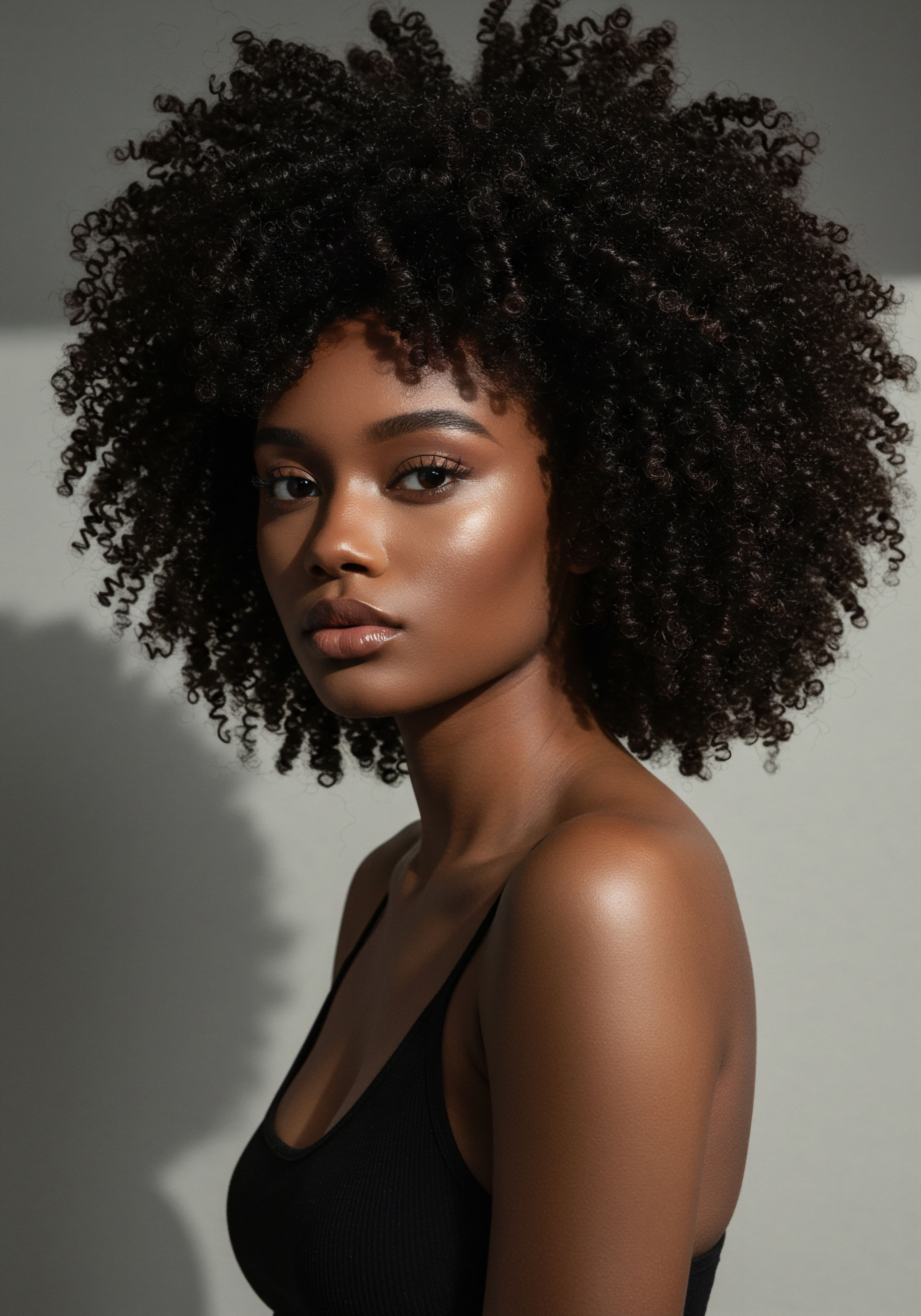
Roots
In the quiet spaces where humidity hangs heavy, shaping the very air we breathe, a subtle question often stirs within those tending to textured hair ❉ how does the wisdom of those who came before us, in similar climes, continue to shape the vitality of our scalps today? This is not merely a question of ancient remedies versus modern formulations, but a deeper inquiry into the enduring principles of balance and care that have, for generations, met the specific demands of hair in moist environments. It is an invitation to consider the scalp, often overlooked beneath a canopy of curls and coils, as a living landscape, intimately connected to its surroundings and its history. The whispers of old practices, carried on the humid breeze, offer a profound connection to the present, guiding our understanding of scalp health with a gentle, knowing hand.

The Scalp as a Living Ecosystem?
The scalp, far from being a mere foundation for hair, presents a complex ecosystem, especially when immersed in a humid climate. This environment, characterized by elevated moisture levels, creates a unique interplay of factors influencing its well-being. Understanding the delicate balance of the scalp’s skin barrier, its sebaceous glands, and its resident microbial community is fundamental. The skin barrier, a protective shield, works diligently to prevent moisture loss and repel external irritants.
In humidity, this barrier faces different stressors, as constant moisture can sometimes compromise its integrity, leading to conditions that require specific attention. Sebaceous glands, responsible for producing sebum, a natural oil, adapt their output to the climate, potentially increasing in response to the skin’s need for lubrication or reacting to environmental triggers.
Moreover, the scalp’s microbial residents, a diverse population of bacteria and fungi, respond dynamically to changes in moisture and temperature. In a humid setting, certain microbial species may proliferate more readily, shifting the delicate equilibrium. This shift, while often benign, can sometimes predispose the scalp to irritation, flaking, or other discomforts if not properly managed.
The interaction between these elements – the barrier, the oils, and the microbes – forms a continuous feedback loop, where each component influences the others, dictating the overall state of scalp health. A healthy scalp is not a static state, but a dynamic equilibrium, constantly adjusting to internal and external cues.

Textured Hair Anatomy and Environmental Adaptation
Textured hair, with its unique structural characteristics, responds distinctively to humid conditions, making its anatomical considerations especially pertinent to scalp health. The helical shape of curly and coily strands means that sebum, the scalp’s natural oil, does not travel down the hair shaft as readily as it does on straight hair. This can lead to a phenomenon where the scalp feels oily, while the hair ends remain dry. In humid climates, this inherent dryness can be exacerbated by the air’s moisture content, which, counterintuitively, can draw moisture from the hair if the external humidity is not properly balanced with the hair’s internal hydration.
The cuticle layers, which form the outer protective shield of each hair strand, are particularly responsive to humidity. When exposed to high moisture, these layers can lift, allowing water to enter the hair shaft, leading to swelling and often, frizz. This swelling can also place mechanical stress on the hair follicle itself, potentially affecting scalp integrity over time.
The density and coil pattern of textured hair also create a microclimate close to the scalp. This dense canopy can trap heat and moisture, creating an environment that differs significantly from the exposed scalp. This localized warmth and dampness can influence everything from sweat production to the proliferation of scalp microbes, directly impacting comfort and cleanliness.
Ancestral practices, honed over centuries in humid environments, often addressed these specific anatomical and environmental challenges, developing methods that supported both the hair’s unique structure and the scalp’s need for equilibrium. Understanding these intrinsic qualities of textured hair is the first step in appreciating the profound wisdom embedded in traditional care methods.
The scalp, a living landscape, requires balance, especially in humid climates where its delicate ecosystem faces unique challenges.

Ancient Lexicon of Scalp Well Being
The language surrounding ancestral hair care is not merely a collection of terms; it embodies a deep understanding of scalp and hair conditions, often expressed through descriptive, sensory-rich phrases. This lexicon reflects observations honed over generations, providing a window into how communities perceived and addressed scalp health in their specific environments. Terms for dryness, irritation, or imbalance were not abstract scientific labels, but often vivid descriptions tied to natural phenomena or common experiences.
For instance, a “tight scalp” might convey not just physical sensation, but also a lack of nourishment or flexibility, suggesting remedies that involve massage or softening agents. The words used to describe a healthy scalp often speak of “cleanliness,” “lightness,” or “growth,” pointing to a clear correlation between a healthy scalp and flourishing hair.
Consider the emphasis on “breathable” styles or “airy” roots in some traditional contexts, terms that speak directly to the need for proper air circulation on the scalp in humid conditions. This emphasis, expressed through everyday language, indicates an intuitive grasp of the challenges posed by moisture retention and microbial growth. The vocabulary of ancestral care also frequently refers to the properties of natural ingredients—the “cooling” effect of certain herbs, the “cleansing” action of specific clays, or the “soothing” qualities of plant extracts.
These terms are not simply labels; they are condensed wisdom, guiding individuals in selecting appropriate treatments based on observed effects. By exploring this ancient lexicon, we begin to appreciate the nuanced diagnostic framework that informed traditional scalp care, a framework that often prioritized holistic well-being over symptomatic relief.
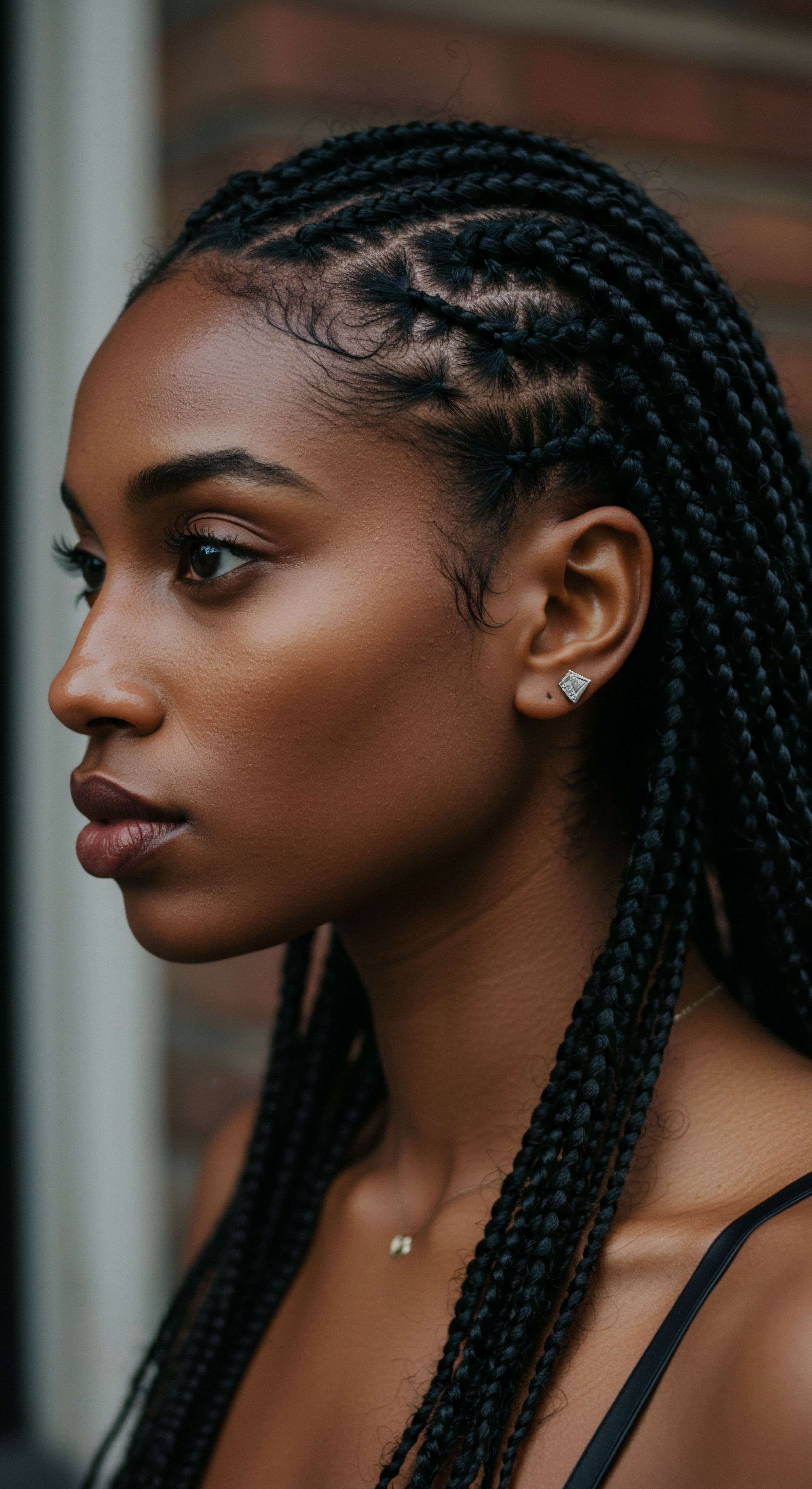
Hair Cycles and Environmental Influences
The natural hair growth cycle, a continuous process of growth, rest, and shedding, is a fundamental aspect of hair health, yet its rhythm can be subtly influenced by environmental factors, particularly humidity. Each hair follicle moves through an anagen (growth), catagen (transition), and telogen (resting) phase. While genetics largely dictates the length of these phases, external conditions can impact the health of the follicle and the quality of the hair produced.
In humid climates, the scalp’s increased moisture content can, in some instances, affect the follicular environment. For example, prolonged dampness can create conditions less conducive to healthy follicle function, potentially influencing the duration or quality of the anagen phase for some individuals.
Furthermore, the physical characteristics of hair in humidity, such as swelling and increased weight from absorbed moisture, can place additional stress on the hair shaft and, by extension, the follicle. While hair is remarkably resilient, chronic environmental stress could theoretically contribute to changes in hair density or growth patterns over extended periods. Ancestral practices, particularly those involving scalp stimulation through massage or the application of botanical preparations, may have inadvertently supported healthy blood circulation to the follicles, mitigating some of these environmental stressors.
These methods, often integrated into daily or weekly rituals, aimed to keep the scalp clean, stimulated, and free from buildup, creating an optimal environment for hair growth regardless of external humidity levels. The resilience of hair, despite environmental challenges, speaks to the adaptability of the human body and the efficacy of time-honored care principles.
- Sebum Regulation ❉ Traditional methods often involved balancing scalp oil production without stripping natural lipids, vital for maintaining the skin barrier in humid conditions.
- Microbial Balance ❉ Ancestral cleansers and tonics frequently utilized botanicals with properties that supported a healthy scalp microbiome, deterring overgrowth of certain organisms.
- Follicle Stimulation ❉ Techniques like scalp massage, prevalent in many traditions, enhanced blood flow to follicles, promoting robust growth cycles even under environmental stress.
| Characteristic Scalp Moisture Level |
| Humid Climate Impact Elevated, potential for excessive dampness |
| Arid Climate Impact Reduced, prone to dryness and flaking |
| Characteristic Microbial Proliferation |
| Humid Climate Impact Increased risk of fungal/bacterial overgrowth |
| Arid Climate Impact Lower risk, but specific dry-skin microbes may appear |
| Characteristic Sebum Production |
| Humid Climate Impact May increase due to perceived dryness or environmental cues |
| Arid Climate Impact Often reduced, leading to dry scalp |
| Characteristic Follicle Environment |
| Humid Climate Impact Risk of occlusion from sweat/product buildup |
| Arid Climate Impact Risk of dryness and irritation from low moisture |
| Characteristic Understanding these climatic differences helps tailor modern scalp care to specific environmental needs. |

Ritual
Stepping beyond the foundational understanding of the scalp, we arrive at the practical expressions of care – the daily rhythms and deliberate actions that have long shaped the vitality of textured hair in humid environments. The desire for healthy, vibrant hair is a universal one, yet the path to achieving it in climates where moisture abounds demands a particular kind of wisdom. This section invites a closer look at the intentional practices, the very rituals, that have been passed down through generations, not as rigid rules, but as adaptable frameworks for nurturing both hair and scalp. It is about discerning the principles behind these age-old methods, recognizing how they addressed the unique challenges of humidity, and considering how their echoes can still guide our hands today, offering gentle, practical insights for modern care.

Protective Styling Principles
Protective styling, a cornerstone of ancestral hair care in humid regions, stands as a testament to deep understanding of hair mechanics and environmental protection. These styles, which often involve braiding, twisting, or coiling hair close to the scalp, serve multiple purposes. Foremost, they minimize exposure of delicate hair strands to the external elements, including excessive humidity, which can cause swelling, frizz, and breakage.
By securing the hair, these styles reduce friction and tangling, common challenges for textured hair, especially when damp. Moreover, they help to retain the hair’s natural moisture, creating a microclimate within the style that shields the hair from extreme fluctuations in environmental moisture.
Consider the widespread practice of cornrows or various forms of braided styles seen across numerous cultures situated in humid zones. These are not merely aesthetic choices; they are functional designs. They keep the hair organized, reduce manipulation, and allow for easier application of scalp treatments. For instance, in West African traditions, intricately braided styles often lasted for weeks, during which time the scalp could be cleansed and oiled without disturbing the main hair structure.
This approach meant less frequent washing of the entire hair length, which could be beneficial in environments where hair might take longer to dry, potentially leading to fungal growth if left damp for too long. The careful tension and sectional division inherent in these styles also promoted healthy scalp circulation and prevented excessive pulling on individual follicles, a consideration that remains relevant for modern protective styling.

Natural Styling and Definition Techniques
The pursuit of definition and vibrancy in textured hair, particularly in humid climates, has long been informed by natural styling techniques that respect the hair’s inherent structure. Ancestral methods often focused on enhancing the natural curl or coil pattern without resorting to harsh chemicals or excessive heat. This often involved the use of specific plant-based gels, mucilages, or butters that provided hold and moisture without weighing the hair down or creating a greasy residue.
The application techniques were often as significant as the products themselves. For example, finger coiling or precise sectioning and twisting methods were used to clump curls together, promoting definition and reducing frizz by encouraging the hair to dry in its natural, organized pattern.
These techniques also considered the drying process, which is critical in humid environments. Rather than relying on forced air, ancestral practices often allowed hair to air dry, sometimes aided by gentle wrapping or covering to prevent over-absorption of environmental moisture while the hair was still wet. The emphasis was on allowing the hair to settle into its natural state, minimizing disruption.
The wisdom here lies in understanding that working with the hair’s natural tendencies, rather than against them, leads to healthier, more resilient strands. Modern approaches to defining textured hair, such as wash-and-gos or twist-outs, echo these ancestral principles, prioritizing gentle handling, appropriate moisture balance, and encouraging the hair’s innate curl memory.
Practical wisdom from ancestral care guides us in nurturing textured hair, especially in humid climates.
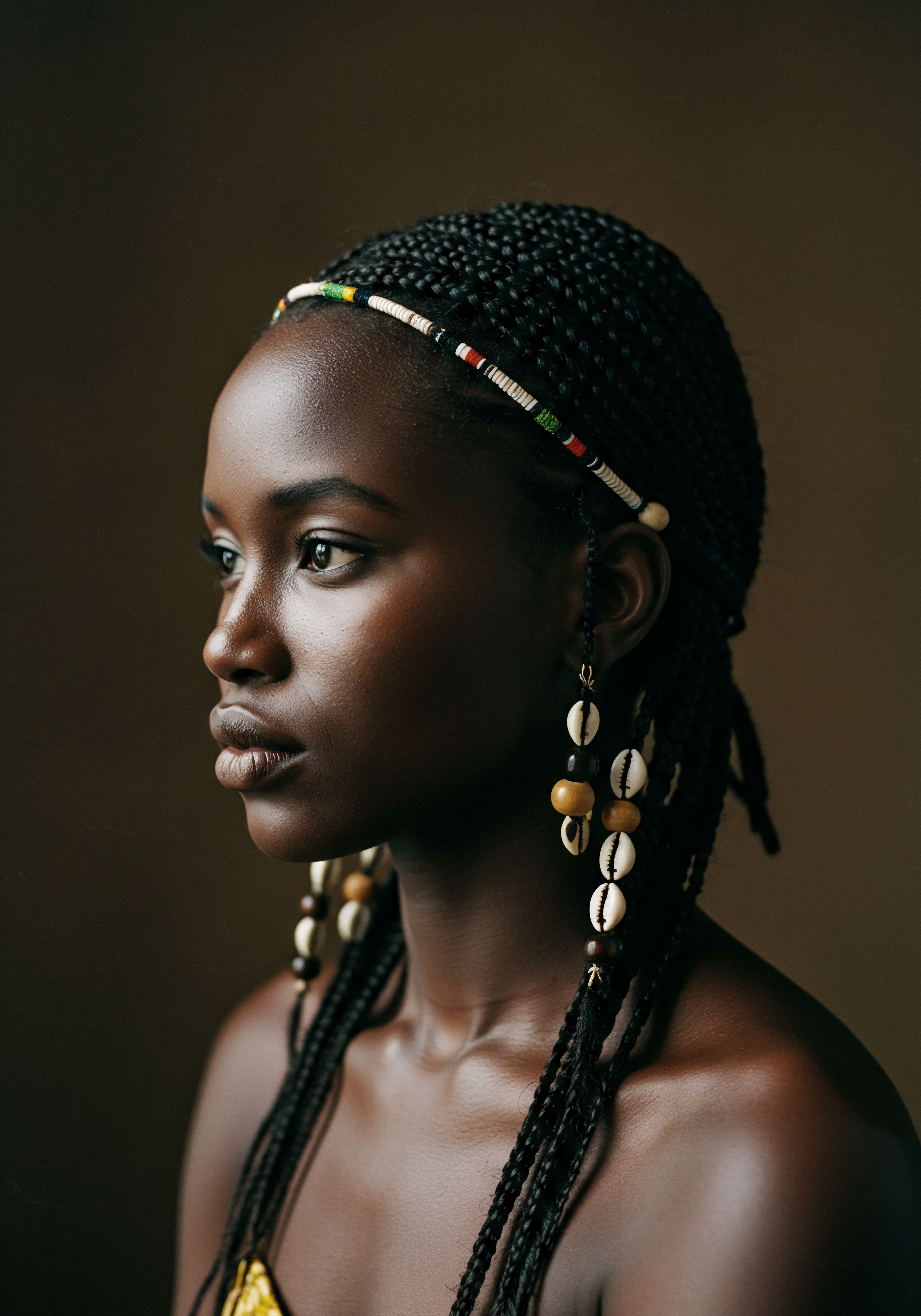
Heat and Hair Health in Humid Climates
While ancestral hair care traditions in humid climates predominantly favored air drying and protective styles, the contemporary landscape introduces the complexities of heat styling. The interaction of heat with textured hair in high humidity presents unique challenges for scalp health. Heat, particularly high temperatures, can compromise the hair’s cuticle, making it more susceptible to absorbing environmental moisture, which can lead to rapid swelling and subsequent damage.
When heat is applied to hair in a humid environment, the sudden expansion and contraction of the hair shaft can cause significant stress, leading to dryness, brittleness, and breakage over time. This damage can also extend to the scalp, as excessive heat can dry out the scalp’s protective barrier, making it more prone to irritation, flaking, or even minor burns.
Ancestral practices, in their wisdom, largely avoided direct, high heat application, opting instead for methods that allowed hair to dry naturally or with minimal, indirect warmth. This reduced the risk of thermal damage to both hair and scalp. Modern heat styling, if chosen, necessitates a nuanced approach in humid conditions. This includes the use of heat protectants that create a barrier against thermal stress, ensuring hair is completely dry before stepping into humid air to prevent re-swelling, and prioritizing low-heat settings.
The principle remains ❉ minimize unnecessary stress on the hair and scalp. Learning from ancestral caution regarding harsh elements helps us approach modern styling tools with greater awareness and care, protecting the delicate balance of scalp health.

The Complete Textured Hair Toolkit
The ancestral toolkit for textured hair care, particularly in humid regions, was a testament to resourcefulness and a deep connection to the natural world. These tools, often simple yet profoundly effective, addressed the specific needs of hair in moisture-rich environments. They were designed for gentle manipulation, effective cleansing, and precise application of nourishing ingredients. While modern tools may appear technologically advanced, their underlying functions often echo these traditional implements.
For instance, wide-tooth combs carved from wood or bone served the same detangling purpose as today’s wide-tooth plastic or silicone combs, minimizing breakage on wet, fragile hair. Natural fibers, such as those from sponges or loofahs, were used for gentle scalp cleansing and exfoliation, much like modern scalp brushes or soft-bristled brushes.
The hands themselves were perhaps the most important tools, used for intricate braiding, twisting, and the delicate application of oils and butters. This direct contact allowed for an intimate understanding of the hair’s texture and moisture levels, guiding the application of products with precision. Tools for creating specific styles, like hair pins or wraps made from natural materials, helped to secure hair without causing tension or restricting air circulation to the scalp.
The continuity between ancestral and modern tools lies in their shared purpose ❉ to facilitate care that respects the unique structure of textured hair and the environmental conditions it faces. The ancestral toolkit reminds us that effective care does not always require complex technology, but rather thoughtful design and mindful application.
- Detangling Tools ❉ Wide-Tooth Combs and fingers were essential for gently separating textured strands, preventing breakage exacerbated by humidity-induced swelling.
- Cleansing Aids ❉ Natural sponges or soft cloths aided in applying cleansers and stimulating the scalp without harsh abrasion, promoting cleanliness without stripping.
- Styling Implements ❉ Hair pins, wraps, and ribbons from natural materials secured protective styles, maintaining their integrity and supporting air circulation to the scalp.
| Ancestral Tool Wide-tooth wooden comb |
| Traditional Use in Humid Climates Gentle detangling of damp, swollen hair to prevent breakage. |
| Modern Equivalent and Purpose Wide-tooth plastic/silicone comb for detangling and curl preservation. |
| Ancestral Tool Natural fiber sponge/cloth |
| Traditional Use in Humid Climates Scalp cleansing, gentle exfoliation, product application. |
| Modern Equivalent and Purpose Scalp brush, soft-bristled brush, microfiber towel for drying. |
| Ancestral Tool Plant-based oils/butters |
| Traditional Use in Humid Climates Moisture retention, scalp nourishment, style setting. |
| Modern Equivalent and Purpose Hair oils, leave-in conditioners, styling creams for hydration and hold. |
| Ancestral Tool Hair wraps/head coverings |
| Traditional Use in Humid Climates Protection from elements, moisture balance, style preservation. |
| Modern Equivalent and Purpose Satin bonnets, silk scarves, hair wraps for nighttime protection and moisture retention. |
| Ancestral Tool Many modern tools and products echo the functional principles of ancestral care. |

Relay
We move now to the deeper currents of influence, where ancestral hair care practices extend beyond mere technique to shape modern scalp health in humid climates through a sophisticated interplay of biological, cultural, and even psychological factors. This is a space where the practical wisdom of our forebears converges with contemporary scientific understanding, offering a profound perspective on how time-honored approaches continue to inform our present realities. It invites a reflective gaze upon the enduring connections between our heritage and the well-being of our scalps, particularly when confronted with the unique demands of a moisture-laden atmosphere. The journey here is one of discerning the subtle yet powerful ways the past informs the future, offering a nuanced understanding that goes beyond the surface of daily routines.

Building Personalized Textured Hair Regimens
The concept of a personalized hair care regimen, often perceived as a modern innovation, finds its roots deeply embedded in ancestral practices. In traditional contexts, hair care was rarely a one-size-fits-all approach; instead, it was meticulously adapted to individual needs, seasonal changes, and local environmental conditions. In humid climates, this meant understanding how different hair textures and scalp sensitivities reacted to constant moisture, and then tailoring treatments accordingly.
This personalization was not based on complex scientific analysis, but on generations of keen observation and experiential knowledge. For instance, a community might recognize that certain individuals required more frequent cleansing due to higher sebum production in humidity, while others benefited from more emollient-rich preparations to prevent dryness and breakage.
This intuitive personalization is a significant lesson for modern scalp health. Today, armed with a deeper understanding of hair porosity, elasticity, and the scalp microbiome, we can refine these ancestral principles. A personalized regimen in a humid climate might prioritize gentle, non-stripping cleansers that maintain the scalp’s pH balance, followed by lightweight conditioners that do not weigh down hair or trap excessive moisture at the scalp level.
The ancestral emphasis on listening to one’s hair and scalp, observing its responses to different elements, remains a guiding principle. It prompts us to move beyond generic product recommendations and instead cultivate an intimate relationship with our own hair, adapting our care to its unique dialogue with the humid environment.

The Nighttime Sanctuary ❉ Bonnet Wisdom
The significance of nighttime hair care, particularly the use of head coverings like bonnets, holds a revered place in ancestral practices, a wisdom profoundly relevant for scalp health in humid climates. For generations, various forms of head wraps, scarves, and coverings were used to protect hair during sleep. This was not merely for aesthetic preservation of styles; it was a deliberate strategy to safeguard hair and scalp from friction, tangling, and moisture loss or gain.
In humid environments, the night presents a unique challenge ❉ the hair and scalp can become damp from sweat, or absorb excessive moisture from the air, leading to potential microbial imbalances or mechanical stress on fragile strands. The bonnet, or its ancestral equivalent, acted as a protective barrier.
It created a contained environment around the hair, preventing the hair from rubbing against abrasive pillowcases, which can cause breakage and frizz. This reduced friction is especially important for textured hair, which is prone to tangling. More critically for scalp health in humidity, these coverings could help regulate the microclimate around the scalp. By absorbing excess moisture or creating a buffer against environmental dampness, they contributed to a more stable scalp environment.
This stability minimizes the conditions favorable for certain fungal or bacterial overgrowths that thrive in warm, damp conditions. The continuity of this practice, from ancient head wraps to modern satin bonnets, underscores its enduring efficacy in maintaining scalp integrity and hair vitality through the night.
Ancestral wisdom provides profound insights into personalized hair care and the vital role of nighttime protection in humid environments.
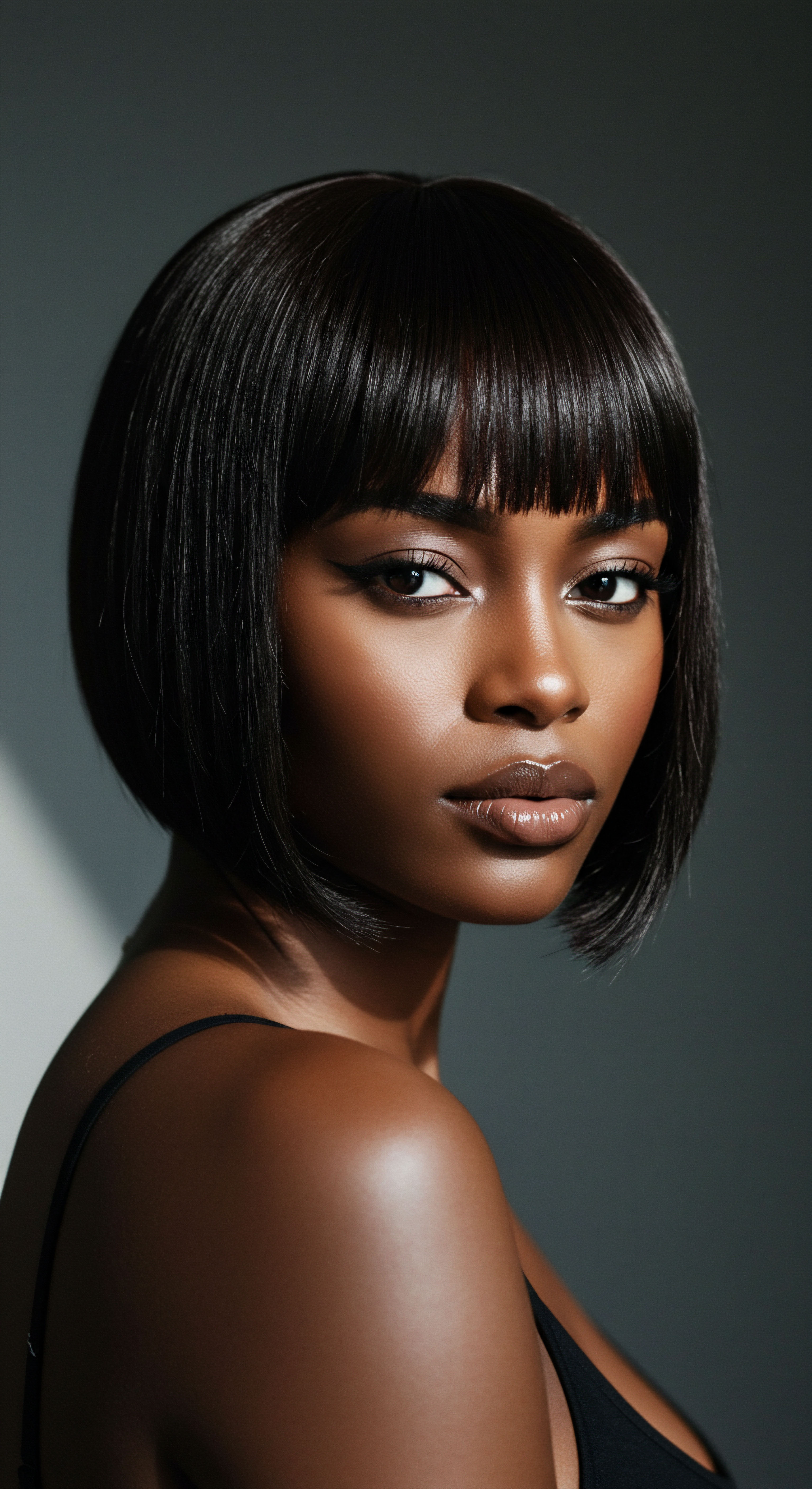
How Do Ancestral Ingredients Still Serve Scalp Needs?
The ancestral pharmacopeia of hair care ingredients, particularly those sourced from regions with humid climates, offers a treasure of botanical wisdom for modern scalp health. These ingredients were selected not only for their perceived cosmetic benefits but also for their functional properties that directly addressed the challenges posed by moisture-laden air. For instance, many traditional cleansers utilized saponin-rich plants that could gently purify the scalp without stripping its natural oils, maintaining the skin’s barrier function. Conditioners often involved mucilaginous plants that provided slip and moisture without being occlusive, allowing the scalp to breathe.
Consider the widespread use of certain plant extracts with documented antimicrobial properties. While ancestral practitioners did not possess microscopes to observe fungi or bacteria, their empirical observations led them to utilize botanicals that inherently supported a healthy scalp microbiome. A compelling example arises from regions where Azadirachta indica, commonly known as Neem, has been a staple in hair and skin preparations for centuries. Research has demonstrated that extracts from Neem exhibit significant inhibitory effects against various fungal species, including those from the Malassezia genus, which are frequently associated with scalp irritation and dandruff, conditions often exacerbated by high humidity.
This suggests that traditional applications of Neem-based concoctions, perhaps unknowingly, contributed to maintaining microbial balance on the scalp, mitigating issues that arise in damp environments. This convergence of ancient practice and modern scientific validation underscores the depth of ancestral knowledge.
Furthermore, ingredients like aloe vera or hibiscus, common in humid climates, were valued for their soothing and hydrating qualities. Aloe vera’s anti-inflammatory properties would have been beneficial for irritated scalps, while hibiscus, rich in mucilage, would have provided natural conditioning. The wisdom here lies in the holistic selection of ingredients that worked synergistically with the climate, supporting both hair integrity and scalp vitality without creating new problems.
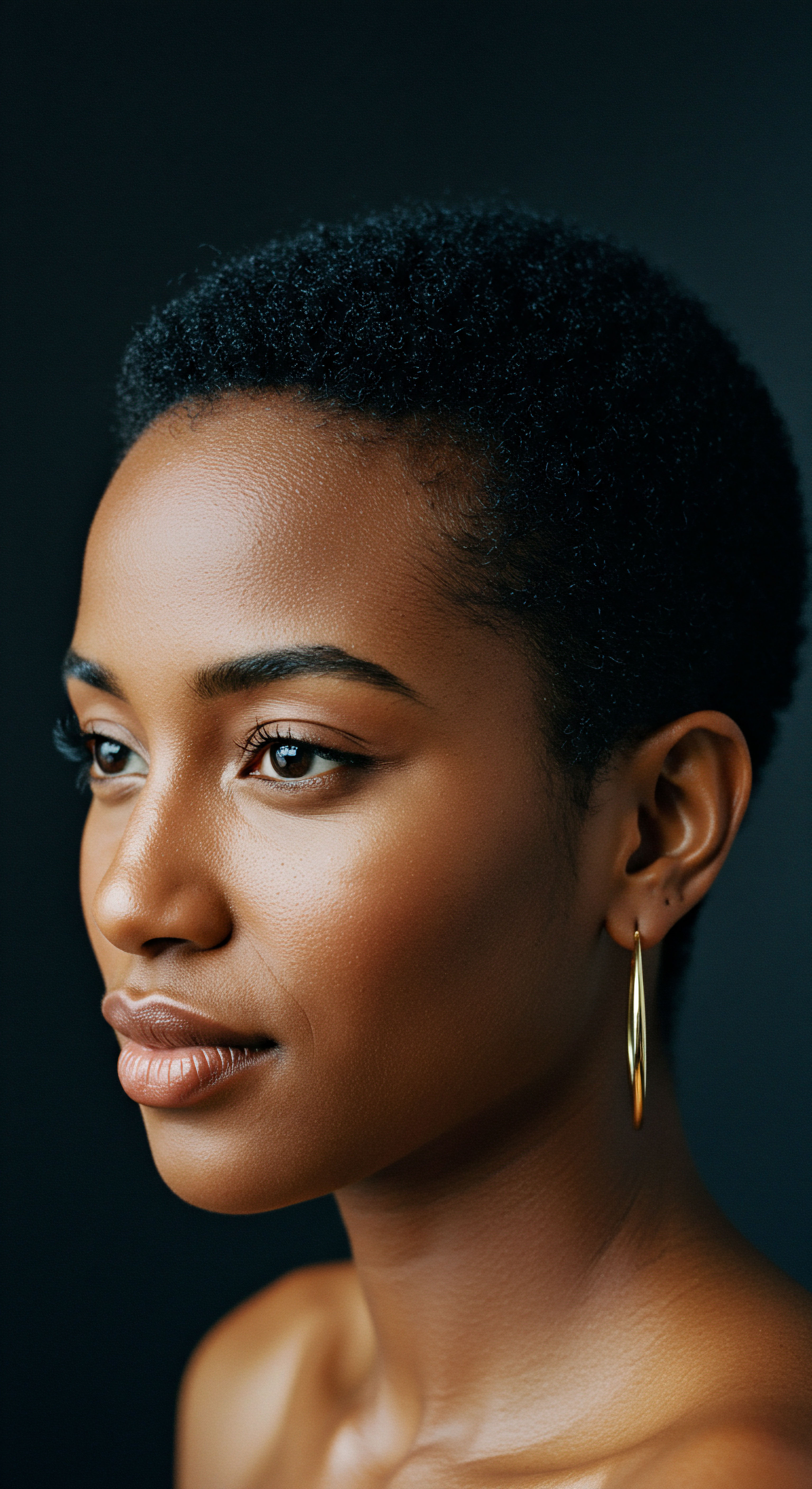
Textured Hair Problem Solving Compendium
Ancestral hair care practices in humid climates inherently included sophisticated problem-solving strategies, often through preventative measures and adaptive responses to common scalp and hair concerns. Rather than reacting to severe issues, these traditions aimed to maintain a state of equilibrium, recognizing that consistent, gentle care was the most effective defense against climatic challenges. For example, excessive oiliness or stickiness, a common complaint in humidity, was addressed not through harsh stripping agents, but through regular, gentle cleansing with natural materials and practices that allowed for air circulation. Conversely, dryness and brittleness, despite the ambient moisture, were counteracted with nourishing oils and butters, applied in ways that sealed moisture into the hair shaft without suffocating the scalp.
The problem of scalp irritation, often linked to microbial imbalances in damp conditions, was met with botanical remedies known for their soothing or antiseptic qualities. This proactive approach to problem-solving contrasts with some modern tendencies to seek quick fixes for symptoms rather than addressing underlying causes. The ancestral compendium of solutions emphasized patience, consistency, and a deep understanding of the interplay between hair, scalp, and environment.
It teaches us that effective problem-solving for textured hair in humidity begins with maintaining a healthy scalp ecosystem, preventing issues before they manifest as significant concerns. This approach speaks to a profound respect for the body’s natural processes and the power of sustained, mindful care.

Holistic Influences on Hair Health
The influence of ancestral hair care practices on modern scalp health in humid climates extends beyond physical application, encompassing a holistic understanding of well-being. These traditions often viewed hair and scalp health as intrinsically linked to overall physical, emotional, and spiritual states. The rituals themselves were not merely chores but acts of self-care, community bonding, and connection to heritage. The communal aspects of hair braiding, for instance, provided opportunities for shared wisdom, support, and a sense of belonging, all of which contribute to reduced stress – a known factor influencing scalp conditions.
Dietary practices, too, played a significant role. Ancestral diets in humid regions often included nutrient-rich foods that supported healthy skin and hair from within, providing the building blocks for strong strands and a resilient scalp. The consumption of hydrating foods and those rich in vitamins and minerals would have contributed to the internal moisture balance and cellular health, indirectly benefiting the scalp’s ability to cope with humidity.
This holistic perspective, which integrates diet, community, and mindful self-care into the hair care regimen, reminds us that scalp health is not isolated. It is a reflection of our entire being, a lesson that continues to hold profound relevance in our contemporary pursuit of well-being, particularly in climates that demand a nuanced approach to care.
- Microbial Management ❉ Ancestral knowledge of plant-based antimicrobials provided effective, gentle solutions for maintaining scalp flora in damp conditions.
- Environmental Adaptation ❉ Practices intuitively adjusted to seasonal humidity shifts, optimizing care for varying moisture levels and their impact on hair and scalp.
- Community Support ❉ Shared hair rituals provided social benefits, reducing stress and promoting overall well-being, indirectly supporting scalp health.
| Element of Care Dietary Support |
| Ancestral Practice Consumption of local, nutrient-dense foods (e.g. leafy greens, hydrating fruits). |
| Modern Relevance for Humid Climates Prioritizing omega-3s, vitamins A, C, E, and B-complex for scalp barrier and hair strength. |
| Element of Care Mindful Application |
| Ancestral Practice Slow, deliberate application of botanical preparations, often with massage. |
| Modern Relevance for Humid Climates Encouraging gentle touch and scalp massage to stimulate circulation and reduce stress. |
| Element of Care Community/Social Aspect |
| Ancestral Practice Communal braiding sessions, shared knowledge of remedies. |
| Modern Relevance for Humid Climates Finding support groups, sharing tips, reducing isolation, contributing to mental well-being. |
| Element of Care Environmental Awareness |
| Ancestral Practice Adapting practices to local flora, humidity levels, and seasons. |
| Modern Relevance for Humid Climates Understanding how specific climate conditions affect individual hair and scalp needs. |
| Element of Care Ancestral care demonstrates that scalp health is deeply intertwined with overall well-being. |

Reflection
As we draw our thoughts together, the enduring influence of ancestral hair care practices on modern scalp health in humid climates becomes strikingly clear. It is a quiet testament to the profound wisdom embedded in observations spanning generations, a knowledge system built not on laboratories and complex machinery, but on an intimate relationship with the natural world and the body’s rhythms. The gentle, consistent care, the mindful selection of botanicals, and the intuitive understanding of environmental challenges all echo through time, offering invaluable guidance for our contemporary approaches.
Our journey through these practices reveals that the past is not merely a collection of dusty relics, but a living wellspring of insights, ready to nourish our understanding of scalp vitality. The conversation between old ways and new discoveries continues, inviting us to listen closely to the echoes of ancestral wisdom, finding in them a harmonious path forward for vibrant scalp health in every climate.
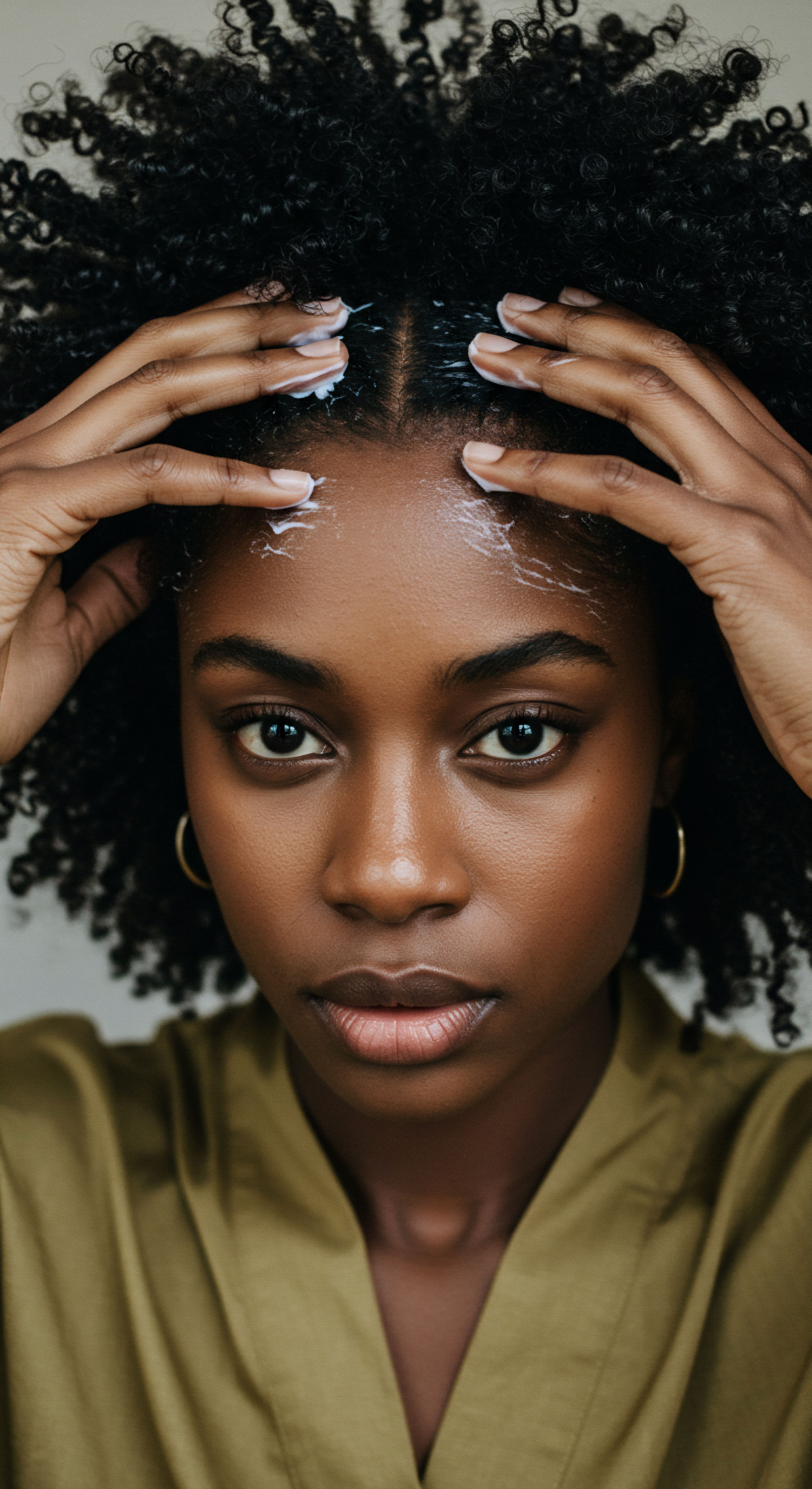
References
- Al-Ani, M. M. K. & Al-Dujaili, A. H. (2014). Antifungal activity of Azadirachta indica (Neem) extracts against dermatophytes and Malassezia species. Journal of Pharmacy Research, 8(2), 223-227.
- Draelos, Z. D. (2010). Hair Cosmetics ❉ An Overview. Journal of Cosmetic Dermatology, 9(1), 1-11.
- Robins, S. L. (2009). African American Hair Care ❉ A History of Style, Culture, and Beauty. Praeger.
- Ghasemi, M. et al. (2019). Traditional medicinal plants for hair care in different regions of the world ❉ A review. Journal of Traditional and Complementary Medicine, 9(1), 1-12.
- Gavazzoni Dias, M. F. R. (2015). Hair Cosmetics ❉ An Overview. International Journal of Trichology, 7(1), 2-15.
- McMichael, A. J. & Alexis, A. F. (2016). Hair and Scalp Diseases ❉ Medical, Surgical, and Aesthetic Treatments. CRC Press.
- Berger, S. (2003). The Culture of Hair ❉ A Global History. Berg Publishers.
- Dawber, R. P. R. et al. (2002). Diseases of the Hair and Scalp. Blackwell Science.